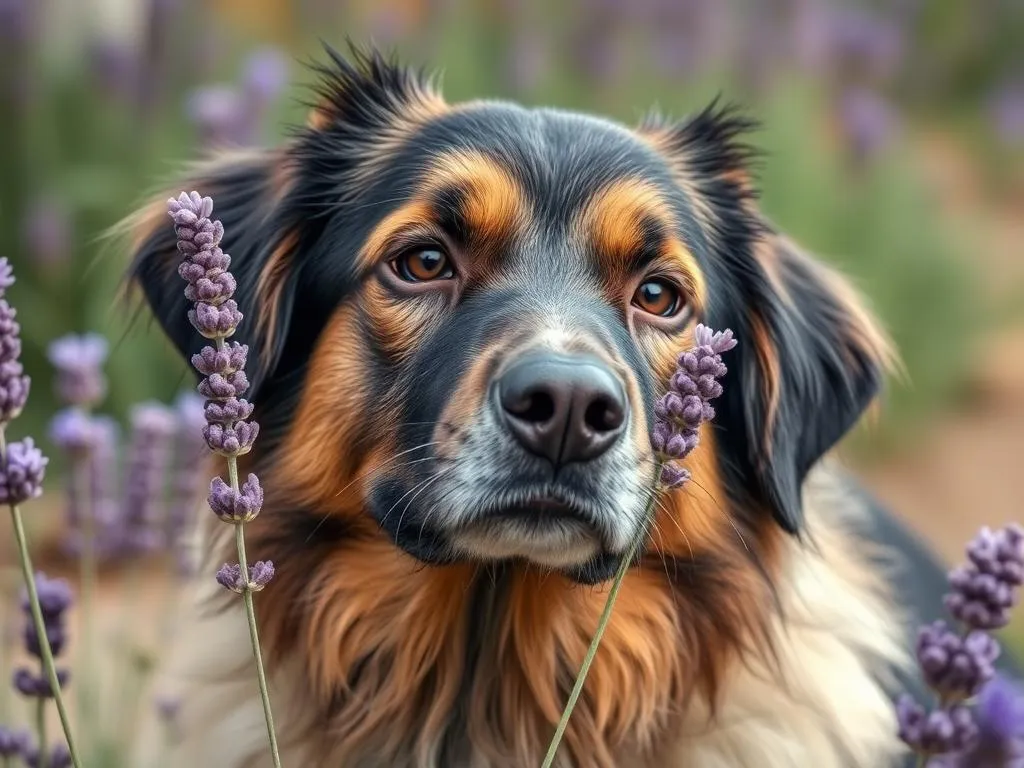
In many gardens, lavender is a popular choice due to its fragrant aroma and beautiful appearance. As a dog owner, you might be concerned if your furry friend takes a nibble of this enticing plant. Understanding the implications of your dog eating a lavender plant is crucial for their health and well-being.
Understanding Lavender
What is Lavender?
Lavender (scientific name: Lavandula) is a genus of flowering plants in the mint family, known for its aromatic properties and stunning purple flowers. There are several varieties of lavender, including English lavender (Lavandula angustifolia), French lavender (Lavandula dentata), and Spanish lavender (Lavandula stoechas). Commonly, lavender is used in aromatherapy, cooking, and gardening. Its essential oils are valued for their calming effects, making it a staple in many households.
Nutritional and Chemical Composition
Lavender is rich in essential oils, primarily linalool and linalyl acetate, which contribute to its soothing fragrance. While these compounds are beneficial for humans, they can affect dogs differently. Dogs metabolize substances differently than humans do, and what may be harmless for us can lead to adverse reactions in our canine companions.
Is Lavender Toxic to Dogs?
Toxicity Levels
In general, lavender is considered to be non-toxic to dogs. However, it can cause mild gastrointestinal upset if ingested in large quantities. Compared to other plants that are known to be toxic to dogs, such as azaleas or oleander, lavender is on the safer side. Still, it’s essential to monitor your dog closely if they eat lavender, as individual reactions can vary.
Symptoms of Lavender Ingestion
If your dog has consumed lavender, watch for the following common signs:
- Vomiting: This is the most frequent reaction to plant ingestion.
- Diarrhea: Your dog may develop loose stools.
- Lethargy: If your dog seems more tired than usual, it could be a sign of distress.
- Loss of Appetite: An upset stomach may lead to your dog refusing food.
If you observe any of these symptoms, it’s essential to assess their severity to determine if veterinary care is necessary.
Immediate Steps to Take if Your Dog Eats Lavender
Assessing the Situation
First, try to determine how much lavender your dog has ingested. A small nibble may not pose a significant threat, while a larger amount could lead to more severe symptoms. Keep an eye out for any signs of distress, and note how quickly they develop.
Home Remedies and First Aid
If your dog shows mild symptoms after eating lavender, you might consider some home remedies. However, always proceed with caution. In some cases, inducing vomiting might be necessary, but this should only be done under the guidance of your veterinarian. If your dog appears stable, you can monitor them closely for any changes.
When to Contact Your Veterinarian
If your dog exhibits severe symptoms, such as persistent vomiting, extreme lethargy, or if you are unsure of the amount ingested, it is essential to contact your veterinarian immediately. Provide them with as much information as possible, including:
- The type of plant ingested
- The estimated amount consumed
- Any symptoms your dog is showing
This information will help your vet assess the situation and determine the best course of action.
Preventing Future Incidents
Dog-Proofing Your Garden
To prevent your dog from eating lavender or any other potentially harmful plants, consider implementing some dog-proofing strategies in your garden:
- Create designated areas: Designate specific areas for your dog to play and roam, away from plants that could be harmful.
- Use barriers: Fencing or garden borders can help keep your dog away from sensitive areas.
- Choose safe plants: Research and select dog-friendly plants to cultivate in your garden. Some safe alternatives to lavender include marigolds, sunflowers, and snapdragons.
Training Your Dog
Training your dog to avoid eating plants can be beneficial for their safety. Here are some basic tips to discourage this behavior:
- Use commands: Teach your dog commands such as “leave it” or “no” to discourage them from approaching plants.
- Positive reinforcement: Reward your dog with treats or praise when they follow your commands and avoid plants.
- Redirect attention: If you catch your dog attempting to nibble on a plant, redirect their attention to a toy or another activity they enjoy.
Conclusion
Understanding the implications of your dog eating a lavender plant is vital for responsible pet ownership. While lavender is generally non-toxic, it can still lead to mild gastrointestinal issues if ingested in large quantities. Always monitor your dog for any symptoms and be prepared to seek veterinary care if necessary. By taking proactive steps, such as dog-proofing your garden and training your pet, you can help ensure a safe environment for your furry friend.









